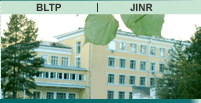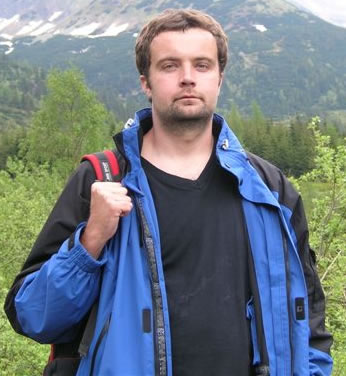- M. Bundzel, T. Kasanicky, R. Pincak, Using string invariants for prediction searching for optimal parameters, Physica A, 444, Pages 680–688 (2016). doi:10.1016/j.physa.2015.10.050
- K. Kanjamapornku, R. Pincak, E. Bartos, The study of the stock
market across the 2008 financial crisis., Physica A, vol. 462, p.117-133 (2016). doi: 10.1016/j.physa.2016.06.078
- K. Kanjamapornku, R. Pincak, Kolmogorov space in time series
data., In Mathematical Methods in the Applied Sciences, p.1-21 (2016).
doi: 10.1002/mma.3875 [preprint]
- A. Sepehri, R. Pincak, Modeling the Electron Transport in
Nanostructures by Using the Concept of BIons in M-theory., In International Journal of Theoretical Physics
doi: 10.1007/s10773-016-3080-1.
- A. Sepehri, R. Pincak, A.F. Ali, Emergence of F(R)
gravity-analogue due to defects in graphene., European Physical Journal B, vol. 89, 250 (2016)
doi: 10.1140/epjb/e2016-70428-4
- N. Tomasovicova, ..., R. Pincak, P. Kopcansky, Biasing a
ferronematic - a new way to detect weak magnetic field, Soft Matter, vol. 12, p.5780-5786 (2016)
doi: 10.1039/C6SM00354K
- J. Smotlacha, R. Pincak, Electronic Properties of Carbon
Nanostructures. Chapter in book: "2D Materials", ISBN 978-953-51-4813-5, Intech (2016)
- R. Pincak, J. Smotlacha, Green Function Approach to the Calculation of the Local Density of States in the Graphitic Nanocone. Conference on Mathematical Modeling and Computational Physics (MMCP) Location: Acad Congress Ctr, Stara Lesna, Slovakia Date: Jul 13-17, 2015. In EPJ Web
of Conferences, vol. 108, 02043 (2016)
- R. Pincak, J. Smotlacha, V.A. Osipov, Electronic states of zigzag graphene nanoribbons with edges re- constructed with topological defects, Physica B, 475, Pages 61-65 (2015). doi:10.1016/j.physb.2015.06.025
- R. Pincak, E. Bartos, With string model to time series forecasting, Physica A, 436, Pages 135–146 (2015) doi:10.1016/j.physa.2015.05.013
- R. Pincak, J. Smotlacha The chiral massive fermions in the graphitic wormhole, Quantum Matter, 4, pp. 1-11 (2015) [pdf]
- R. Pincak, J. Smotlacha, M. Pudlak Spin-orbit interaction in the
graphitic nanocone, Eur. Phys. J. B 88:17 (2015) DOI: 10.1140/epjb/e2014-50413-9
- R. Pincak, J. Smotlacha, M. Pudlak Calculation of the electronic
structure near the tip of a graphitic nano cone, Physica B 441, pp. 58-61 (2014) doi:10.1016/j.physb.2014.02.012
- R. Pincak, With strings toward safety future on
financial markets , (2014) chapter 6 in book "Financial Markets: Recent Developments,
Emerging Practices and Future prospects" (NOVA Science Publisher, NY) Editor Prof. Mohsen Bahmani-Oskooeev ISBN: 978-1-62948-420-4 [pdf]
- M. Bundzel, T. Kasanicky and R. Pincak, Experimental
Analysis of the Prediction Model Based on String Invariants,
, Computing and Informatics, (2013) Vol. 32
- R. Pincak, The string prediction models
as an invariants of
time series in forex market, Physica A (2013) 392 6414 [pdf]
- M. Bundzel, T. Kasanicky and R. Pincak, Experimental
Analysis of the Prediction Model Based on String Invariants,
, Computing and Informatics, (2013) Vol. 32
1001-1015 [pdf]
- M. Pudlak and R. Pincak, Effect of the
magnetic field on the edge states of zig-zag single wall carbon
nanotubes, Physics Letters A (2013) 377 2384 [pdf]
- J. Smotlacha, R. Pincak, Application of
greens function approach to electronic structure of carbon nanocylinders,
NANOSYSTEMS: PHYSICS, CHEMISTRY, MATHEMATICS (2013) 4 (4) 490 [pdf]
- R. Pincak, J. Smotlacha, Analogies in
electronic properties of graphene wormhole and perturbed nanocylinder,
Eur. Phys. J. B (2013) 86: 480 [pdf]
- M. Pudlak and R. Pincak, Edge states of
graphene bilayer strip, Eur. Phys. J. B (2013) 86: 107 [pdf]
- R. Pincak, J. Smotlacha, M. Pudlak, Electronic
properties of disclinated nanostructured cylinders, 2013,
NanoMMTA, Vol. 2, 81-95 DOI: 10.2478/nsmmt-2013-0005
- R. Pincak and M. Pudlak, The electronic
properties of double wall carbon nanotubes, 2012,
J. of Phys.: Conf. Ser. 393 012028 [pdf]
- R. Pincak, J. Smotlacha and M. Pudlak, Electronic
properties of perturbed cylinder, 2012,
J. of Phys.: Conf. Ser. 393 012029 [pdf]
- J.Smotlacha, R. Pincak, M. Pudlak, Electronic
structure of disordered graphene with Green's function approach,
Physics Letters A 376, Issue 45 (2012) 3256 [pdf]
- R.Pincak, M.Pudlak, J.Smotlacha, Electronic
properties of single and double wall carbon nanotubes Carbon
Nanotubes:Synthesis, Properties and Applications (NOVA Science
Publisher, NY, 2012), ISBN: 978-1-62081-914-2 [pdf]
- J. Smotlacha, R. Pincak, M. Pudlak, Electronic
Structure of Disclinated Graphene in an Uniform Magnetic Field,
Eur.Phys.J. B 84,255-264 (2011) [pdf]
- M.Pudlak, K.N. Pichugin, R.G. Nazmitdinov and R.
Pincak, Quantum nonequilibrium approach for fast electron
transport in open systems: Photosynthetic reaction centers,
Physical Review E 84, 051912 (2011) [pdf]
- M. Pudlak, R. Pincak, Influence of the
electric field on the electron transport in photosynthetic reaction
centers, Eur. Phys. J. E 34 (2011) 22 [pdf]
- M. Pudlak and R. Pincak, The
electronic spectra of double-wall zig-zag carbon nanotube affected by
the magnetic field, 2010, J. Phys.: Conf. Ser. 248 012008
[pdf]
- E.A. Kochetov, V.A. Osipov and R. Pincak, Electronic
properties of disclinated flexible membrane beyond the inextensional
limit: application to graphene, J. Phys.: Condens. Matter 22
(2010) 395502 [pdf]
- M.Pudlak and R.Pincak, Electronic pathway
in reaction centers from Rhodobacter sphaeroides and Chloroflexus
aurantiacus, Journal of Biological Physics, 36 (2010),
273-289 [pdf]
- M.Pudlak and R.Pincak, Energy gap between
highest occupied molecular orbital and lowest unoccupied molecular
orbital in multiwalled fullerenes,Physical Review A 79 (2009)
033202 [pdf]
- M.Pudlak and R.Pincak, Electronic
properties of double-layer carbon nanotubes,
European Physical Journal B 67 (2009) 565. [pdf]
- M. Pudlak, R. Pincak and V.A.Osipov, How
the spheroidal deformation changes the spectra of fullerenes,
Journal of Physics, Conf. Ser. 129 (2008) 012009 [pdf]
- M. Pudlak, R. Pincak and V.A.Osipov, Electronic
structures of double-layer zig-zag carbon nanotubes,
Journal of Physics, Conf Ser. 129 (2008) 012011 [pdf]
- M. Pudlak, R. Pincak, V. A. Osipov, Effect
of symmetry on the electronic structure of spheroidal fullerenes in a
weak uniform magnetic field, Physical Review A, 75 (2007)
065201
DOI: 10.1103/PhysRevA.75.065201
[preprint]
- R. Pincak, M. Pudlak, Chapter in book Progress
in Fullerene Research, with title Electronic
structure of spheroidal fullerenes,
ed. F. Columbus, Nova Science Publishers, New York, 2007, ISBN:
1-60021-841-5 [pdf]
- M. Pudlak, R. Pincak and V.A. Osipov, Electronic
structure of spheroidal fullerenes in a weak uniform magnetic field: a
continuum field-theory model, Physical Review A, 75 (2007)
025201,
DOI: 10.1103/PhysRevA.75.025201
[preprint]
- M. Pudlak, R. Pincak and V. A. Osipov, Low
energy electronic states in spheroidal fullerenes, Physical
Review B 74 (2006) 235435
cond-mat/0602520,
DOI: 10.1103/PhysRevB.74.235435
[preprint]
- R. Pincak, Spheroidal geometry approach
to fullerene molecules, Physics Letters A 340 (2005) 267 [pdf]
- R. Pincak, V. A. Osipov, Localized
electron states near pentagons in variously shaped carbon nanoparticles,
Physics Letters A 314 (2003) 315 [pdf]
- M. Pudlak, R. Pincak, Modeling charge
transfer in the photosynthetic reaction center, Physical
Review E 68 (2003) 061901 [pdf]
- R. Pincak, M. Pudlak, Noise breaking the
twofold symmetry of photosynthetic reaction centers: Electron transfer,
Physical Review E 64 (2001) 031906 [pdf]
- M. Pudlak, R. Pincak, The role of
accessory bacteriochlorophylls in the primary charge transfer in the
photosynthetic reaction center, Chemical Physics Letters 342
(2001) 587 [pdf]
- R. Pincak, M. Pudlak, Electron Transfer
and Quantum Yields in Photosynthetic reaction center,
Proceedings of the Conference Mathematical and Theoretical Biology,
ESCULAPIO Pub. Co., Bologna, Italy, (2003) 434 [pdf]
- M. Pudlak, R. Pincak, Transport of
Electrons in Reaction Centers, Proceedings of the Conference
Small Triangle Meeting on Theoretical Physics, October, Kosice (2000) 44
- R. Pincak, M. Pudlak, Charge separation
in photosynthesis, Proceedings of the Conference Small
Triangle Meeting on Theoretical Physics, September, Snina (2001) 49
- R. Pincak, M. Pudlak, Kinetic model of
electron transfer in bacterial photosynthetic reaction centers,
Proceedings of the Conference Small Triangle Meeting on Theoretical
Physics, october 8-10, Snina (2002) 58
- PhD thesis distinguished by the jury of the Vaclav
Votruba Prize for the best doctoral thesis in theoretical physics for
work devoted to a very difficult subjekt Transport of electrons in
photosynthetic reaction center, December 2004, Prague
|



